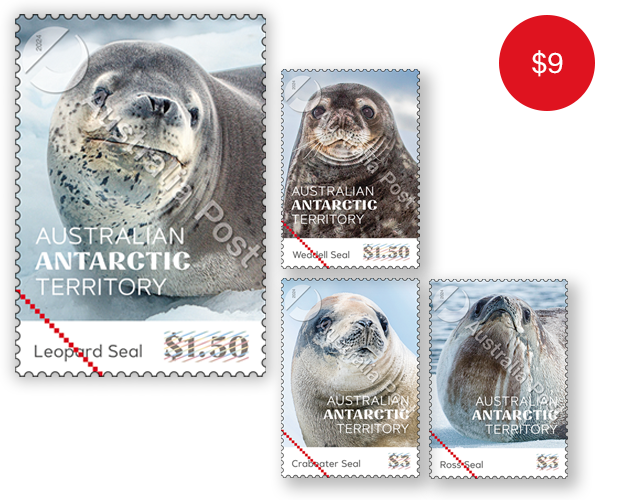
Set of Australian Antarctic Territory Seals Gummed Stamps
This set of stamps contains the four stamp designs from Australian Antarctic Territory Seals stamp issue.
Of the six seal species that live in Antarctic waters, four species breed and live primarily on Antarctic pack ice. The other two species – Antarctic and Sub-Antarctic Fur Seals, and Southern Elephant Seals – are both found north of the pack-ice zone and breed in dense colonies on beaches.
| Issue date | 13 August 2024 |
| Issue withdrawal date | To be announced |
| Denomination | $1.50 x 2, $3 x 2 |
| Stamp design & Product design | Jo Muré, Australia Post Design Studio |
| Paper: gummed | Tullis Russell 104gsm Red Phosphor |
| Printer | EGO |
| Printing process | Offset lithography |
| Stamp size (mm) | 26 x 37.5 |
| Minisheet size (mm) | 170 x 80 |
| Perforations | 14.6 x 13.86 |
| Sheet layout | Module of 50 (2 x 25 no design) |
| FDI postmark | Kingston TAS 7050 |
| FDI withdrawal date | 1 March 2025 |
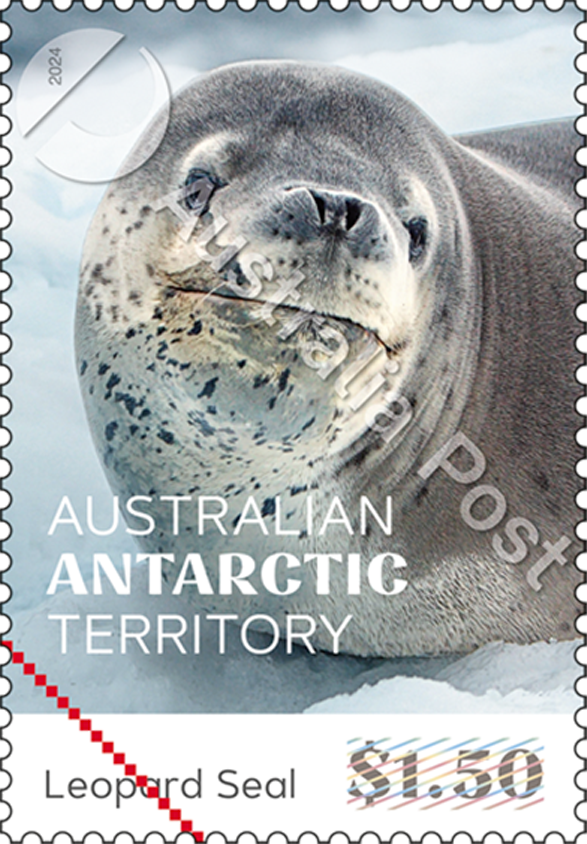
The Leopard Seal is a large seal (200 to 600 kg), with massive jaws, a slender body and long fore-flippers. Solitary, and a fierce, fast-moving predator, the Leopard Seal is the only seal that preys on warm-blooded animals, including penguins and the pups of the other seal species in this issue.
The only natural predator of the Leopard Seal is the Killer Whale or Orca.
The stamp photograph is by Angela N Perryman/Shutterstock.com
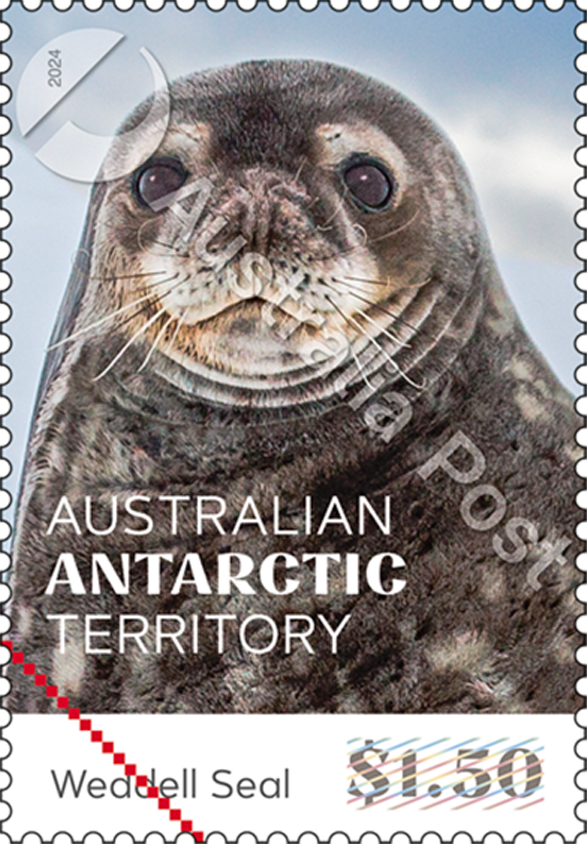
The Weddell Seal is a large seal (400 to 600 kg) that lives on fast ice near the coast. When out of the water, Weddell Seals remain close to their access holes on top of the ice, often in small groups. This seal’s head is small relative to body size is usually dappled grey and black on the back with a mostly white under-belly.
The stamp photograph is by Jo Crebbin/Shutterstock.com
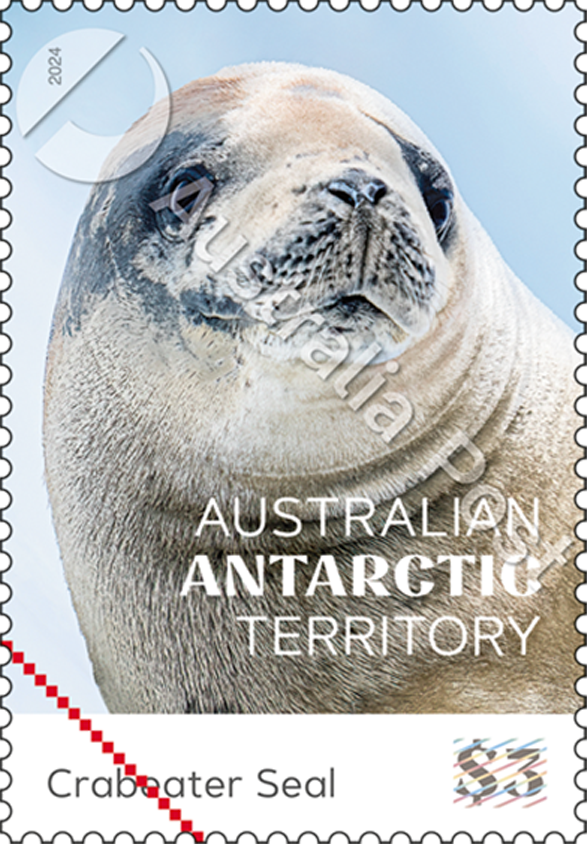
The Crabeater Seal is a medium to large seal (around 400 kg) and the most numerous of all seal species. While Crabeater Seals can congregate in large groups of up to around 1,000 individuals, they are more commonly observed in smaller groups or as solitary animals. Adult Crabeaters have slim, lithe bodies, long snouts, and are silvery grey in colour after moulting. Unlike other seals, which feed on fish, squid and prawns and despite its name, the Crabeater feeds mainly on krill, which it sieves through its specialised teeth.
The stamp photograph is by nwdph/Shutterstock.com
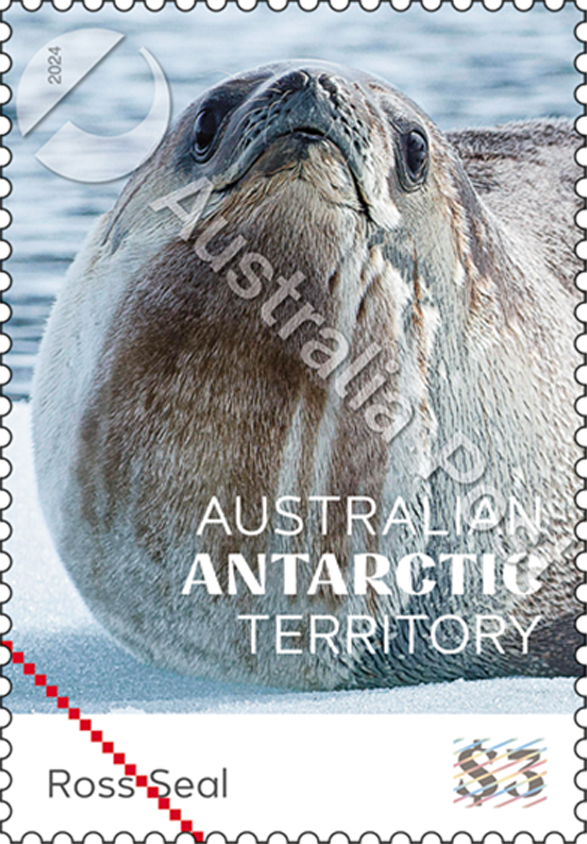
The Ross Seal is the smallest (around 200 kg), least abundant and least well known of the Antarctic seals. Usually solitary, it lives on the densest pack ice. It has a short, broad muzzle, large eyes, and is dark to light brown on the back and silvery-white on the belly.
The stamp photograph is by Justin Hofman/Alamy Stock Photo

This set of stamps contains the four stamp designs from Australian Antarctic Territory Seals stamp issue.
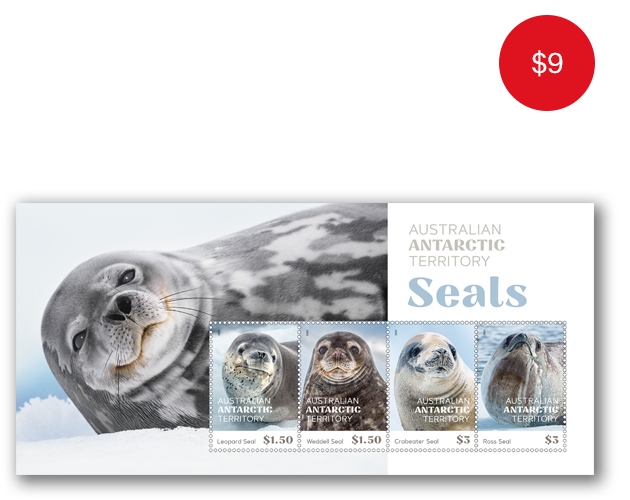
This minisheet is from the Australian Antarctic Territory Seals and presents the four stamp designs with a seal in the background.
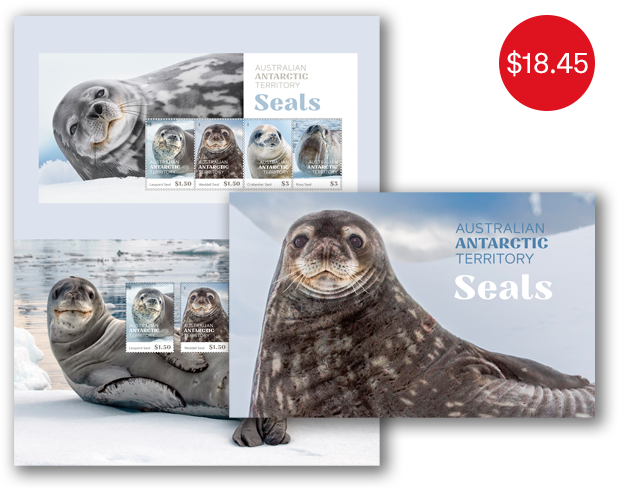
This Australian Antarctic Territory Seals stamp pack contains the four stamps and minisheet from the stamp issue presented in a high-quality folder.
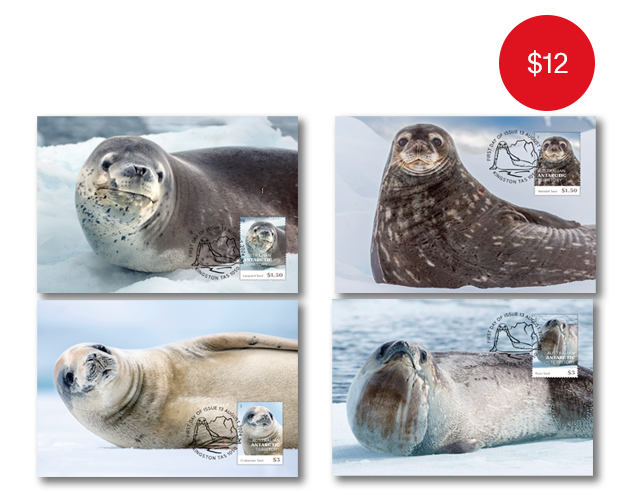
This maxicard set contains the four maxicards from the Australian Antarctic Territory Seals stamp issue.
This content was produced at the time of the stamp issue release date and will not be updated.